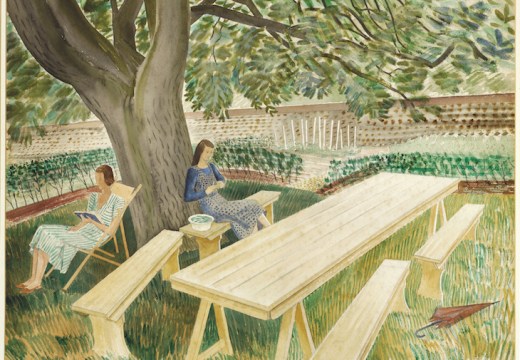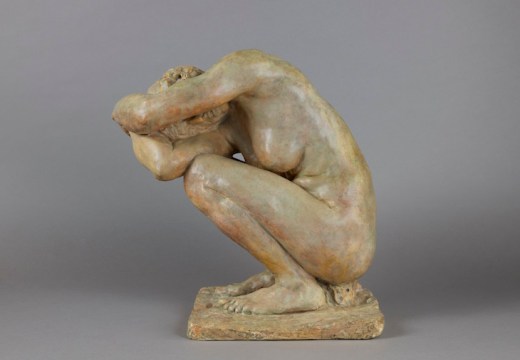Harold M. Williams, the founding president and CEO of the J. Paul Getty Trust, has died at the age of 89. Williams held the position from 1981 until 1998, taking on the role at a time when the Getty’s board of trustees was working to determine how best to use the vast resources left by the trust’s founder, J. Paul Getty.
With Nancy Englander, the Getty’s director of programme planning and analysis (and later Williams’s wife), Williams drove the development of the Getty as an interdisciplinary centre for learning and for the study of art history. It was he who conceived of the Getty Center in Los Angeles, which opened shortly before he retired, in 1997. Remembering Williams, the current Getty president and CEO, James Cuno, said that ‘Harold envisioned and then built the Getty Center as a museum, library, laboratories, and public spaces for the greater appreciation, understanding, and conservation of the world’s artistic legacy. We are all deeply in his debt.’
In December 1997, Williams was named the Apollo Personality of the Year. As the accompanying (unsigned) article argued, ‘Undeniably Harold Williams thought big, hired well and leaves not only the institution but our cultural world a far richer place.’ In a long interview with the late Paul Josefowitz, then publisher of Apollo, Williams discussed the cultural and political aims of the Getty, and how he imagined the cultural foundations of the future. Extracts from that interview are republished below.
Paul Josefowitz: How long have you been at the Getty?
Harold Williams: Since May of 1981. By the time I leave, it will be 17 years.
When you took over the endowment was much, much smaller and I was wondering if you had a different plan when you arrived there, given the smaller endowment.
No, it wasn’t different, it wasn’t as ambitious. In other words, the programmatic directions that we ended up taking were the same ones that I proposed to the board in May of 1982.
In other words, the five different areas [the Getty Information Institute, The Getty Leadership Institute for Museum Management, The Getty Education Institute for the Arts, The Getty Conservation Institute, The Getty Research Institute for the History of Art and the Humanities, besides the J. Paul Getty Museum]…
That’s right.
And so, were those five areas enunciated when you were interviewing for the job?
No. Those were developed by me and the two people that I recruited to join me. We spent a year actually travelling, primarily in the Western world, looking for what I call the interstices. Getty’s estate hadn’t closed yet but we anticipated in the area of a billion dollars, with only a small museum at that point. We recognised, however, that we had the opportunity, and to me opportunity is also responsibility, to look at the ways, in addition to building a museum, that could really make a contribution to the field. Then the trustees, in recruiting me, agreed with that in principle but at that point I couldn’t tell you what it would mean and obviously they couldn’t either. But we spent the next year exploring the field. […]
Did you know then that you were going to build a building of significance?
No. Part of the initial vision, though, was that we would develop these five areas and that ultimately these areas, each of which would have its own perspective on its part of the field, would be hopefully making a significant difference in its area by bringing back to us the needs of the field or the perceptions of the field and so forth. The idea would be then that in our own five areas the people involved would be located together where they could share the various perspectives and the questions that are raised by the field in different areas. Exhibitions would be richer, research projects would be from more than one perspective.
Sure, an interdisciplinary approach.
Exactly.
Was there ever a sixth element that almost got put in there but didn’t?
Not really, no. The grant programme we had was added about a year later.
Which of those programmes do you think has had the greatest impact on the world?
Wow! That’s hard to say. On the world, I’d say the impact at this point is probably largest by the Conservation Institute and the Information Institute.
And on Los Angeles?
The Museum and the Education Institute and, to a great degree, the Research Institute, which has developed a network into the city that’s really quite impressive.
If you had to think of one thing from those five programmes that is your particular legacy to the world that you are leaving behind, besides the building, which is a permanent monument, some approach or something that would not have existed had you not been there?
I agree with you in your characterisation of the Getty Center – while it’s beautiful, it’s tangible, it’s only a manifestation or, you might say, a fertile environment for the important work of the Getty to be pursued. To me the only way I can answer you is to say we have really created an institution that’s absolutely unique in the world. There is no other place that brings together, maybe as equal partners and as colleagues, people with these different approaches and aspects of visual arts, cultural heritage and the humanities. That, to me, is what I regard as my legacy. […]
Why are you retiring early?
It really isn’t early. Let’s look at it two ways, they are both a piece of it. One is that I have accomplished what I came to do, which was the opening of the Getty Center. Number two, with the opening of the Getty Center, two major shifts, if you will, or impacts on the future of the Getty; one is we finally have these various programmes together in one place where we can hopefully generate the kind of synergy and interaction that wasn’t a condition initially but has now become feasible because we are no longer scattered. The second aspect of this is that we now have a much greater presence and a visible cultural force in Los Angeles and have an opportunity and a responsibility to really enhance the cultural scene in Los Angeles. That’s the second dimension.
Sounds like a great job. I think a lot of people have envied you your job over the years.
I think it’s the greatest job in the world.
How much would you say that you have spent, not including the building, in getting to where you are today in terms of the programmes, the collection and so on, since you arrived?
Probably $2 billion.
Looking back, is there something besides fine tuning and so on that you would do very differently if you could do it again? Build the building earlier? Allocate twice as much to the world monument programme? Anything like that?
I would have liked to get this building done five years earlier. It would have been a real plus. Apart from that, this is really hard for me to answer. This place and the programmes are in very different places to where we started and not only in a matter of size but with regard to their acceptance in the world, their ability to be a catalyst. […]
In terms of impact, I sense you have been very aware of the long-term impact of your programmes.
That’s the key.
When do you think one can start to analyse this long-term impact? How many years does it take to make a really good judgement on this?
It’s something that has to be evaluated continually. I would say we are far enough along to demonstrate long-term impact but, because this is such a unique institution, if you asked me what was my biggest concern with the future of the Getty I would say it’s that we become stultified and we become complacent, that we become self-satisfied in what we are doing. The key to the future of this place is one of continual self-assessment and self-renewal and constantly criticising and questioning what we are doing and how we are doing it and whether the needs of the field are being pursued in the right ways so that we can make a greater contribution if we did ‘A’ versus ‘B’ or whatever.
Who else is making these kind of judgements? Would it be the President of a big university, for instance?
No, I think the President of a big university is spending his time raising money.
That’s true. Who is sitting there in a seat trying to be a visionary? Aside from President Bill Clinton. Although he spends most of his time raising money.
I think there are unfortunately not enough people doing it – but the people in positions I think with major foundations like Rockefeller, Borg, MacArthur, Kellogg. Major foundations in this country are all looking at those kinds of issues. Now they are primarily grant makers; we are distinctive in that we are operators, which has some advantages and disadvantages.
If you think of future foundations that people might create (this is just fantasising), if someone came to you and said: ‘Harold, I’m thinking of doing a $10-billion foundation and I don’t know whether I should do it in the field of culture, medicine or socially beneficial activities such as education, healthcare’, that kind of thing. Does art and culture sometimes seem trivial to you compared to other world problems?
I ask myself that question, and have over the years periodically, and the answer to me is clearly no. It isn’t trivial and I think that it and education to me are the keys to the future of civilised society. My other activities, you might say my outside activities at this point, are and will continue to be, maybe they will be more inside than outside, are educational both at what we call the public school level and higher education. In terms of the kind of changes that need to occur in both of those spheres, they both need major changes. I spent four hours in a meeting this morning; I co-chair something called the California Citizens Commission on Higher Education and we are looking at particularly public higher education in California. The process has to be reshaped for the 21st century. […]
Unlimited access from just $16 every 3 months
Subscribe to get unlimited and exclusive access to the top art stories, interviews and exhibition reviews.














![Masterpiece [Re]discovery 2022. Photo: Ben Fisher Photography, courtesy of Masterpiece London](http://www.apollo-magazine.com/wp-content/uploads/2022/07/MPL2022_4263.jpg)
Has the Fitzwilliam lost the hang of things?